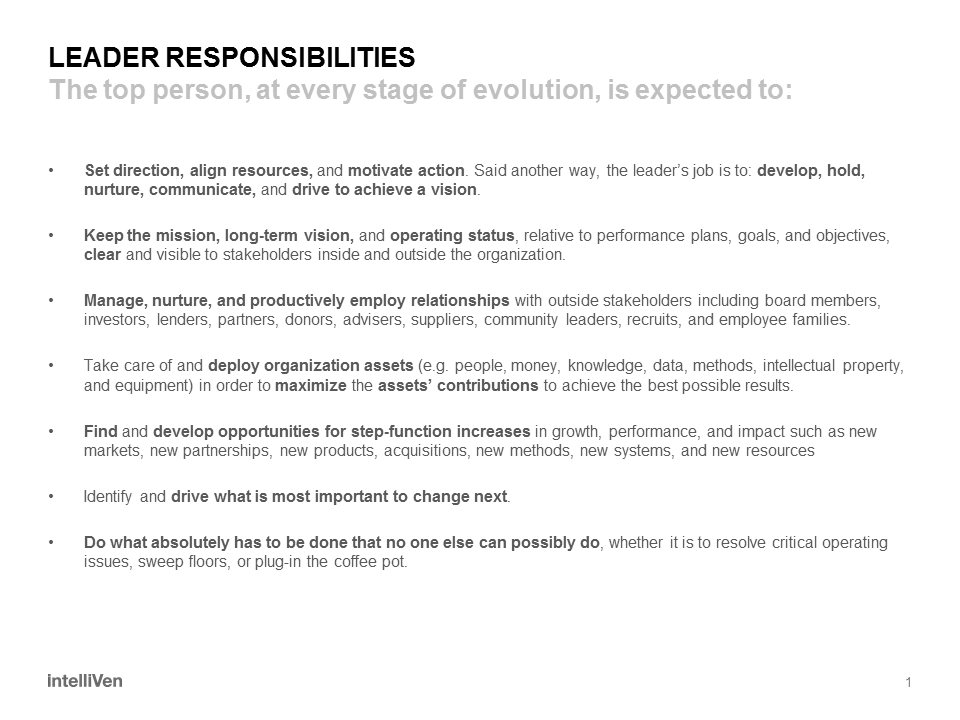Every organization has, or needs, a leader. And it is true that the power of one committed, clever person can make all the difference in the world. But no one individual, even the greatest leader, does anything of much significance alone.
The simple truth is that it takes a team to lead an organization. The action motivated by this truth is for the leader to decide what kind of leader to be and then to attract, collect, and align their top team and collect followers.
The best leaders figure out that it is not all about them. It is about their organizations and the decision to either manage or lead is a false dichotomy. The one in charge needs to manage in order to lead and, indeed, can and should Manage to Lead their organization to achieve their stated vision. The top person’s job starts with managing themself to lead.
The leader’s work is never finished; the job is 24/7 and comes with a ubiquitous, omnipresent, and incessant sense of accountability to owners, investors, lenders, donors, customers, taxpayers, partners, employees and their families, and the local community. The mantel
of responsibility is never unyoked and may cause physical distress to those not cut out for the role, or the equivalent of a runner’s high to those who are!
 The role and specific tasks vary considerably with organization maturity and scale, but the responsibilities presented in the above figure are core to the top job from day-one. Despite the clarity afforded by the list, deciding how to spend time hour-by-hour, day-to-day is far from clear for many, if not most, leaders.
The role and specific tasks vary considerably with organization maturity and scale, but the responsibilities presented in the above figure are core to the top job from day-one. Despite the clarity afforded by the list, deciding how to spend time hour-by-hour, day-to-day is far from clear for many, if not most, leaders.
Some leaders wrestle with whether to get work done themselves or to assign and develop others to perform the functions of their organization in an ever-more systematic, teachable, scalable, predictable, and reliable way. As Michael Gerber says in his eMyth Revisited, it comes down to whether the one in charge wants to “make pizza” or “build a pizza-making business.”
When the one in charge decides to do personally what thet believe is needed to get work done, no matter how right it seems at the time, they should consider the following, all of which can lead to less than optimal results:
-
Time spent on a specific thing is time that cannot be spent on something that is more important.
-
Everyone else in the organization will refrain from doing what the person in charge does for fear of upstaging or competing; their default thinking is that “If the top-dog is doing it, they had better not interfere.”
-
Others in an organization tend to assume that what the person in charge does is right and correct, so they fail to think critically about it and so tend not to push back when they should.
The net effect is that the most important thing for the top-person to do does not get done, they end up doing what others can and should do, but now avoid doing, and there is a lack of critical thinking which can lead to poor performance.
The organization’s ability to perform and grow becomes constrained by its top person; and that top person might then wonder if they should work on being a better manager, or work on being a better leader.
 The answer for most is that theyshould manage to lead as explored in the eponymous IntelliVen workbook.
The answer for most is that theyshould manage to lead as explored in the eponymous IntelliVen workbook.

